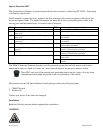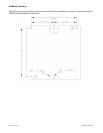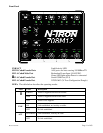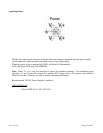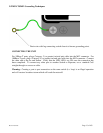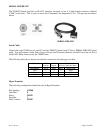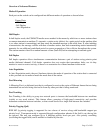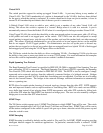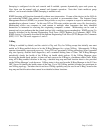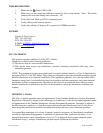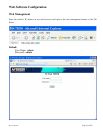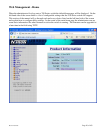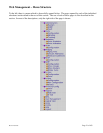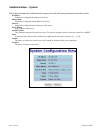Revision 071108
Page 16 of 102
Virtual LAN
The switch provides support for setting up tagged Virtual LANs. A port may belong to any number of
Virtual LANs. The VLAN membership of a station is determined by the VLAN(s) that have been defined
for the port to which the station is connected. If a station should move from one port to another, it loses its
current VLAN membership and inherits that of the new port it is connected to.
A Default Virtual LAN exists to which a port, which is not a member of any other Virtual LAN, will
belong. This allows the switch to operate as a ‘normal’ Bridge when it is used in a network. A port is
automatically removed from the Default VLAN when it is reconfigured to belong to another Virtual LAN.
Using Tagged VLANs, the switch has the ability to take non-tagged packets in some ports, add a VLAN tag
to the packet and send it out tagged ports on the switch. The VLANs can also be configured to accept
tagged packets in tagged ports, strip the tags off the packets, and send the packets back out other untagged
ports. This allows a network administrator to set up the switch so he can support devices on the network
that do not support VLAN Tagged packets. The administrator can also set up the ports to discard any
packets that are tagged or to discard any packets that are untagged based on a hybrid VLAN of both tagged
and untagged ports, and using the VLAN Ingress Filter on the switch.
The 708 Series switch also has the ability to allow overlapping VLANs. Overlapping VLANs give the user
the ability to have one or more ports share two or more VLAN groups. For more information and examples
on how this could be implemented, please see our website’s technical documents.
Rapid Spanning Tree Protocol
The Rapid Spanning Tree Protocol as specified in IEEE 802.1D-2004 is supported. One Spanning Tree per
non-overlapping VLAN is supported. The Rapid Spanning Tree Protocol (RSTP) supersedes the Spanning
Tree Protocol (STP) which was described in IEEE 802.1D-1998. The RSTP is used to configure a simply
connected active network topology from the arbitrarily connected bridges of a bridged network. Bridges
effectively connect just the LANs to which their forwarding ports are attached. Ports that are in a blocking
state do not forward frames. The bridges in the network exchange sufficient information to automatically
derive a spanning tree.
RSTP allows for much quicker learning of network topology changes than the older STP. RSTP supports
new and improved features such as rapid transition to forwarding state. RSTP also sends out new BPDUs
every hello time instead of just relaying them. RSTP interoperates with older STP switches by falling back
to the older STP when the older BPDUs are detected on bridge ports. The user can also manually configure
bridge ports to use the older STP when desired.
SNMP Traps
The 708 Series switch supports up to 5 SNMP Trap Stations to which SNMP Traps will be sent. The switch
supports four standard traps; Link Up, Link Down, Cold Start and Warm Start. SNMP Traps will be sent to
all the stations configured on the switch if a port Link goes up or down, when the switch first powers up and
when the switch is reset.
IGMP Snooping
IGMP Snooping is enabled by default, and the switch is Plug and Play for IGMP. IGMP snooping provides
intelligent network support for multicast applications. In particular, unneeded traffic is reduced. IGMP



